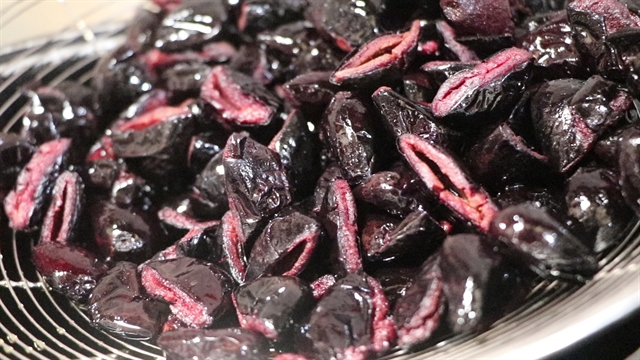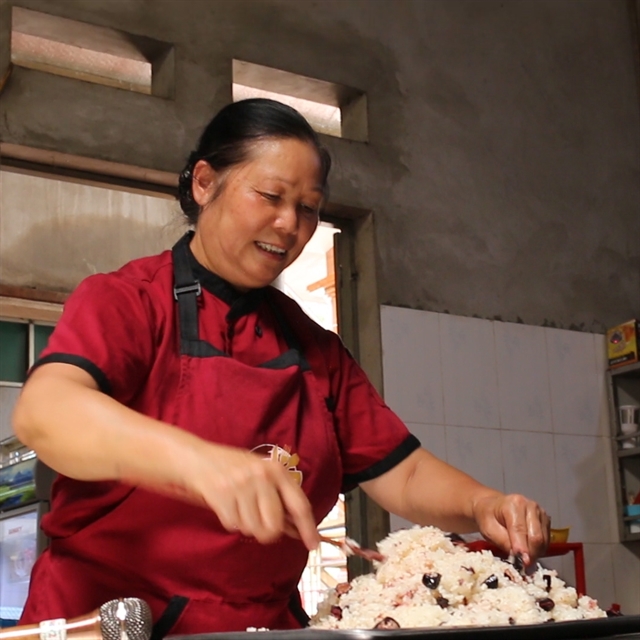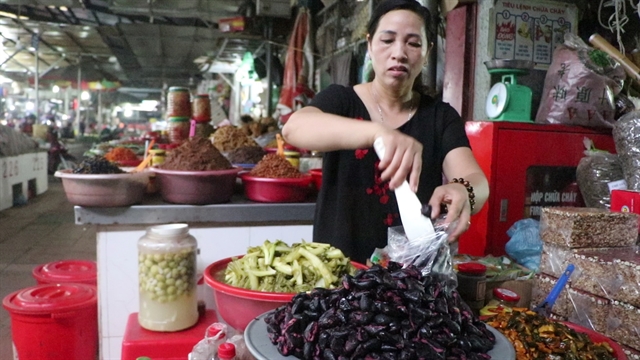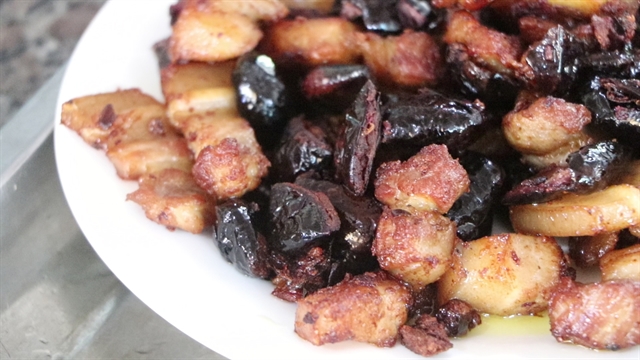 Life & Style
Life & Style


|
| Pili nuts are a specialty of the northern province of Cao Bằng. — VNS Photo Đoàn Tùng |
Bảo Hoa
Is it a nut? Or is it an olive?
Truth is, it’s a nut, but trám is often described as the Vietnamese olive. And if you want the best, you better head north, because Cao Bằng truly is nut heaven!
In bygone times, trám, or pili nuts, were a meat substitute because of their rich flesh and high protein content. But before vegans prepare a mecca to Cao Bằng, today you’ll find the red nut served with many different types of meat.
Phương Thị Cưu has been cooking pili nuts for more than forty years. She may be a little biased, but Cưu feels the nuts from her province are far superior to those from elsewhere in Việt Nam.
“Pili have existed for a long time,” said Cưu.
“From generation to generation, we have witnessed the nuts grow, fall, and then grow again. The villagers picked up the nuts and found them edible, and they're even better when mixed with sticky rice.

|
| Phương Thị Cưu mixes pili nuts with sticky rice at her restaurant in Cao Bằng City. Pili nut sticky rice is a traditional dish in Cao Bằng. — VNS Photo Bảo Hoa |
“They brought the nuts home to process by boil them all up or keeping them warm before drying. In the past, the villagers didn’t have meat but only pili nuts to eat with salt.
“And that has become Cao Bằng's specialty. Now, when they're fried with meat or cooked with sticky rice, these nuts taste really good.”
They are similar in both colour and texture to the olives you would find in Europe, but hey, this is Việt Nam remember, so they taste a lot better.
For three decades, Hoàng Kim Vân has been selling pili nuts at a market in Cao Bằng City.
“Since I started trading at this market, I have been selling pili nuts,” said Vân.
“These nuts are from the northern province of Cao Bằng. I buy them to sell to customers all year round.
“Every year, people sell me pili nuts when they're in season. I have to keep them warm. But before that, I wash the nuts two to three times with clean water. The nuts are then soaked in 80 degree water until they become soft, then they are left out to dry.

|
| Hoàng Kim Vân has been selling pili nuts at local markets for 30 years. — VNS Photo Đoàn Tùng |
“After drying, I cut the nuts in half and add some flavouring. Then we put them in the freezer to preserve them. This means we can enjoy them all year round.”
So whatever the weather, and whatever the time of year, you will find pili nuts in many dishes served in Cao Bằng.
Vân added: “Pili nuts can be fried with burnt bacon. Or you can make pili nut sticky rice, it’s a traditional dish for Vietnamese people. In Cao Bằng Province, people often eat pili nuts, pili nut sticky rice and stir-fried pili nuts with meat. They are all really delicious!”

|
| In the old days pili nuts were used as a substitute for meat. Nowadays they are often fried with pork as a side dish. — VNS Photo Bảo Hoa |
But there is a golden rule when picking which nut to cook with – and sometimes smelling nice does not necessarily mean it is the right nut to choose.
Chef Cưu said: “There are two types of pili nuts: high-quality and ordinary nuts. The ordinary nuts are sour and don't have a very rich taste, despite their fragrant smell, and they are not that soft to eat.
“On the other hand, high-quality nuts are soft and have a rich buttery taste.”
She believes what also makes these nuts so special is that even in a simple form, they are not only tasty, but also very filling.
Cưu added: “Retaining the national identity and keeping the pili are something really wonderful because among all the traditional food, pili nuts are the best; edible in all four seasons and can be substituted for other foods. If there is no food, just a few pots of nuts can fill up two to three bowls of rice.”
So next time you’re in Cao Bằng, maybe visiting the world famous Bản Giốc waterfalls, you may want to try the region’s other specialty.
And once you do, who knows? You may well end up going nuts, for pili nuts. — VNS
Pili facts:
Watch our video about pili nuts:




